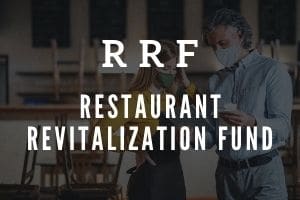Blockchain is new technology that will have many implications in the legal world. However, before you can understand the implications/applications of Blockchain technology, first a little summary on what it actually is.
What is Blockchain?
When we say “Blockchain,” many people have not heard about it; however, if we say “Bitcoin,” most everyone has. Bitcoin is the first result (and the most famous) of the usage of Blockchain technology.
Blockchain is essentially a method to verify trust and transfer something of value without the middleman/in-between. The thought is that almost any type of transaction involving an exchange of value, be it information, money, goods, or property, can be conducted securely and efficiently with Blockchain. Blockchain technology creates a decentralized, digital ledger of transactions. The Blockchain encrypts the transactions, then distributes them throughout the network, creating a public record that is virtually impossible to hack. This allows for a highly reliable digital system where interactions, transactions and agreements can happen without the need for a single centralized authority.
What are the components of Blockchain?
Blockchain has three main components: (1) a network of computers, (2) a network protocol, and (3) a consensus mechanism. The first component, network of computers, is important because it creates fault tolerance. A Blockchain network can include everyone with a computer or a small group of known entities that agree to participate. Each computer in a particular network is called a node. In its ideal state, each node has a copy of the entire ledger, similar to a local database, and works with other nodes to maintain the ledger’s consistency which creates fault tolerance: if one node disappears or goes down, all is not lost. The second component, network protocol, governs how those nodes communicate with one another; and finally, the third component, the consensus mechanism, is a set of rules the network uses to verify each transaction and agree on the current state of the Blockchain. This third component creates trust.
Types of Blockchain?
Another aspect to know about Blockchain is that there are two types: Permissionless (public) and Permissioned (private). The Permissionless Blockchain allows for anyone to participate and contribute to the “ledger.” Bitcoin is mainly permissionless and therefore very easy to participate. Permissioned, on the other hand, is a network that is made up only of known participants. The network owner vets who participates.
Today, most interactions use a trusted intermediary such as a bank, agent or mediator to complete transactions. Blockchain may provide a replacement for these intermediaries. The excitement surrounding Blockchain is related to its limitless potential.
Applications of Blockchain:
Smart Contracts
When discussing the possible applications of Blockchain technology smart contracts are usually at the forefront of those discussions.
What is a smart contract?
In Blockchain terms, a smart contract is a coded program that contains the terms of agreement and triggers that allow the provisions of a contract to be carried out upon notification. For example, the delivery of an asset, a shipment of goods or other promised completion of services can automatically trigger a payment or other exchange defined in the contract. Blockchain provides a decentralized ledger that stores and replicates documents and agreements, giving them a certain security and immutability.
What are the benefits of smart contracts?
Since Blockchain-based smart contracts are contracts that can be partially or fully executed or enforced without human interaction, Blockchain can reduce moral hazards and optimize the use of contracts in general. Therefore, certain areas where there are numerous intermediaries because of the issue of trust in exchanging/transferring property (which is currently very slow and expensive) can actually be expedited and made exponentially cheaper by using this technology and getting rid of the numerous intermediaries. One prime example is automated escrow. Other services built solely on trust and verification would benefit from this technology (e.g. wire transfer fees, third party financial auditing, etc.).
What are the legal issues with smart contracts?
However, smart contracts can also bring about a whole slew of legal issues. If contracts are realized automatically and simultaneously among parties that are scattered all over the world and something goes wrong, what jurisdiction will apply? Which country, state, etc., court can the parties bring this issue to? What country’s laws will govern? These are just a few of the many concerns with this new area that is being pioneered.
Corporate Governance
Blockchain brings transparency and security
Blockchain technology is exciting news because it allows for more security as well as more transparency. By making results fully transparent and accessible, this distributed database technology allows governance to be more trustworthy (For Example: in the government [i.e. elections/polls] as well as in governing corporations) .
Furthermore, in an age where consumers increasingly want to know that the ethical claims companies make about their products are real, Blockchain provides an easy way to certify that the backstories of the things the consumers buy are genuine. This is possible because transparency comes with Blockchain-based timestamping of a date and location (on ethical diamonds, for instance) that corresponds to a product number. Consumers can verify themselves that they are getting what they asked for.
Example of Blockchain usage in governance
An app (“Boardroom”) exists that enables organizational decision-making to happen on the Blockchain. In practice, this means company governance becomes fully transparent and verifiable when managing digital assets, equity or information.
Real Property
Blockchain technology may be used for dealing with real property records such as land registry and property deeds, as well as, intellectual property records such as patents and trademark rights.
A public Blockchain ledger can keep reliable records of property titles, deeds and ownership changes as they occur. Property owners, banks, insurance companies, title companies and municipalities would all have access to clean records of ownership and title transfers, reducing future title search time and increasing transparency.
Intellectual Property
As with real estate, Blockchain can provide indisputable records for intellectual property rights on patents, trademarks and copyrights. Blockchain is irreversible, secure and time-stamped, offering a reliable way to track first use.
A Blockchain approach to IP management could also be used with any kind of digital asset, such as images, video files, audio recordings, and other digital content. For example, professional photographers or musicians could use it to manage licensing rights to their creations and to enable royalty payments.
References:





